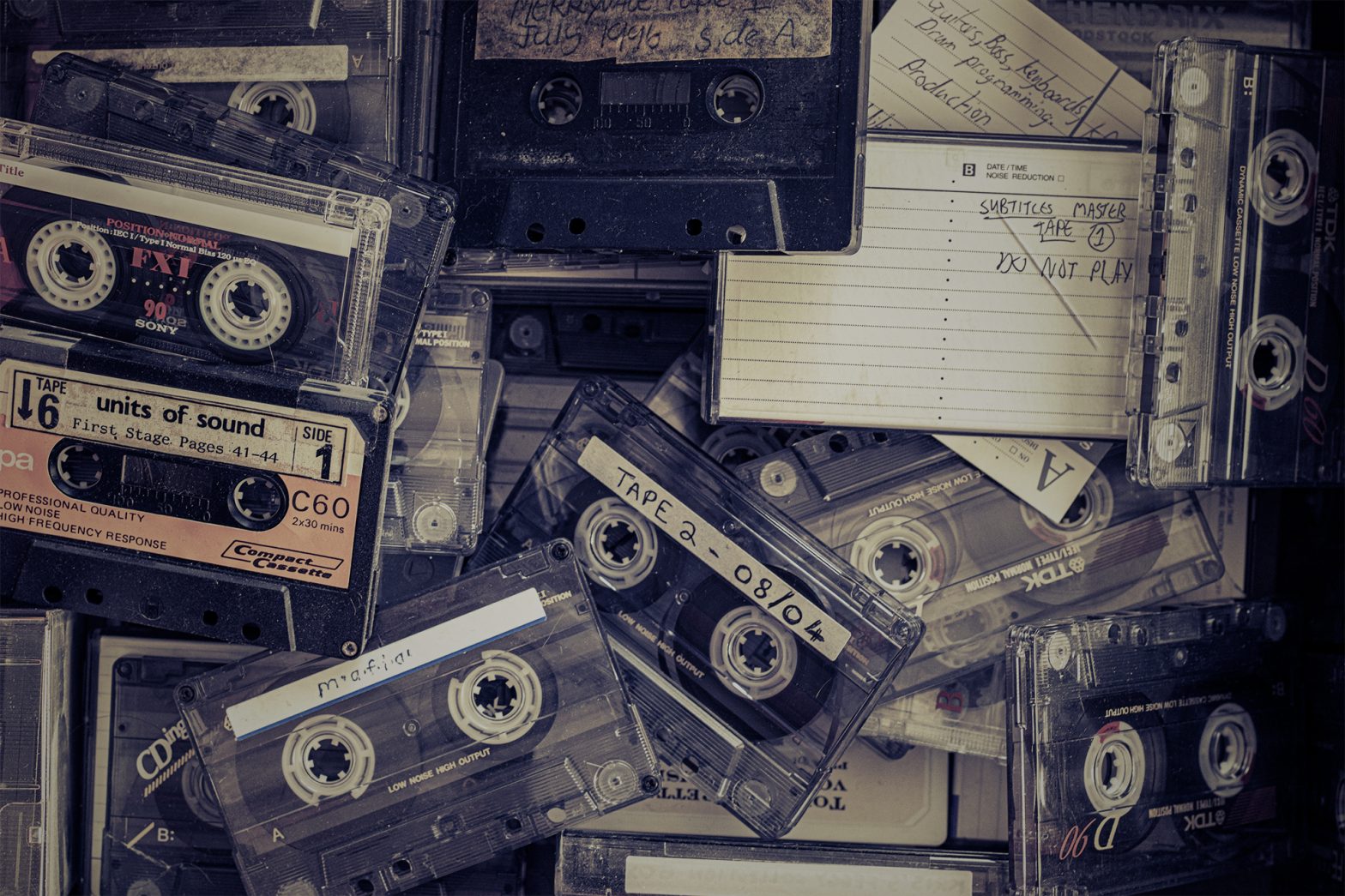
I started writing songs in an era dominated by cassette tapes. My little Sanyo tape recorder had a built in microphone, and my earliest songs were committed to tape (real tape) that way. It looked something like this:

That worked perfectly well to get the ideas out of my head; chords, melodies, lyrics. But to imagine something more like a record, that would require multitrack recording. Fortunately, I had access to one of these:

And with that, I could make that most hallowed of things when you’re 14 in 1996; a Demo Tape.
There was never any illusions of finish with a demo tape. It was a demonstration of the song. I remember a cassette, given away free with the NME, doing the rounds at school. It included the demo of Oasis’ Live Forever. It was like hearing a sacred artefact. The difference between the demo and the hit, it revealed so much of the process. I knew I couldn’t make a record on 4 track, but I could get my vision across 4 whole tracks. 4 tracks! You don’t know you’re born etc etc.
Fast forward to this digital age of software instruments and final master quality sounds within a laptop, and the concept of a demonstration recording seems to have fallen away. In this part of the timeline, many of us just make the track. With so many great sounds available, why not? Even heavy guitars, traditionally a challenge to record well, can be direct injected straight into a laptop and into incredibly realistic amp simulations. It’s all possible; even the most ambitious ideas can be created this way, and it’s possible to start work with as through vision to a final master.
So why demo? Well, I think there’s a few things that get lost for me in the digital age. Art needs restriction to thrive, and the endlessness of opening a blank DAW session and working right through to a release lacks a certain boundary. Demos were restricted by all sorts of factors; time, format, resources. And in amongst those limitations is the excitement that feeds a song in it’s early stages.
I say this after testing the theory. Earlier this week, while working with one of my regular studio collaborators, I found myself needing to turn something around fast. We were working on a cover version, and the arrangement we had wasn’t landing for me. I had exactly 1 hour to fight my case and come up with something better. No time to A/B amp sims, no time to program drums in detail, I just had to throw stuff at the wall. I haven’t worked that way in a long time, and it was a revelation. Using Logic Pro X’s Drummer track, smashing the nearest guitar down via the first amp sim patch that was vaguely appropriate, we pulled a track together in an hour. It’s not the final thing, but it had a ton of energy.
Repeating the exercise the next day, I sat down and demoed one of my new songs. I gave myself the afternoon; if I didn’t have something reasonably listenable by the end of the day, the song was to be binned. No time to tweak, no time to even go to the studio. I sat in my living room and threw things down. Now at the end of the week, I’m listening to 4 demos. All too rough for public consumption, but full of energy and quick thinking. The first song had some structural issues that I just couldn’t find the inspiration to fix. I solved the problem in the final 20 minutes of my demo session, and the changes are some of my favourite things about the song now. Fresh music.
So I’m making demos again, and listening back to them in the evening, like I’m 15 again. Some simple ground rules guide this approach:
- Limited time. An afternoon is enough.
- A very “light” set-up: guitars DI’d, a dynamic mic to track vocals.
- Use loops and/or MIDI packs to quickly sketch drums.
- Feel the pressure! Solving problems is easier under pressure.
It’s important that these are not “good” recordings. There’s lots of holes, holes to be filled with imagination. There’s a greater sense of continuity across multiple songs too. For me, finishing one song, moving on to the next, it lacks consistency. Having rough demos to listen to side-by-side reveals narrative clues about how songs sit together. One song at a time in isolation, I lose that perspective.
As with anything, it’s a bespoke solution. This may be dreadful for you. Seeing a master recording through from a blank session may be the joy you get from the process. But for me, quick and rough snapshots, especially when dealing with a pile of songs, really helps. It feels familiar, and that’s part of it’s charm. Maybe that’s more the clue; tapping into the enthusiasm of my early, limited attempts at recording. Certainly, there was a magic to staying late after school to work on a Portastudio with one microphone that doesn’t come from opening Logic on my MacBook.
What about you? What parts of your early process could be worth tapping into? Let me know!

